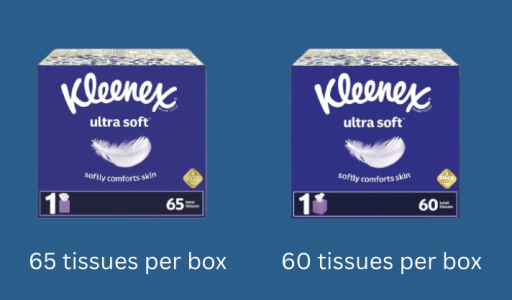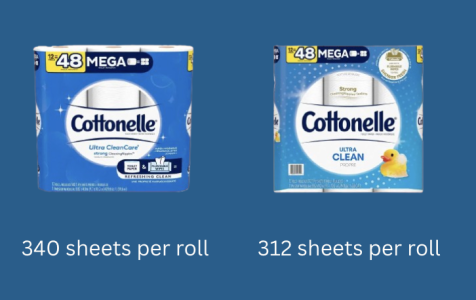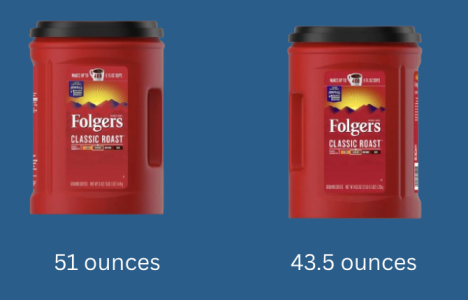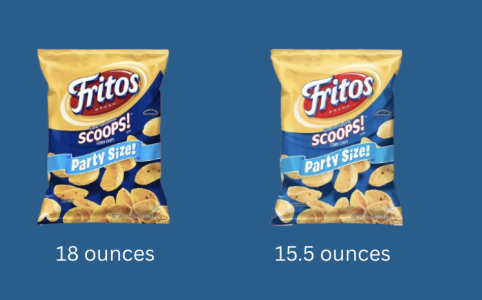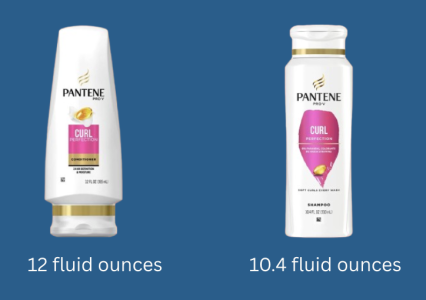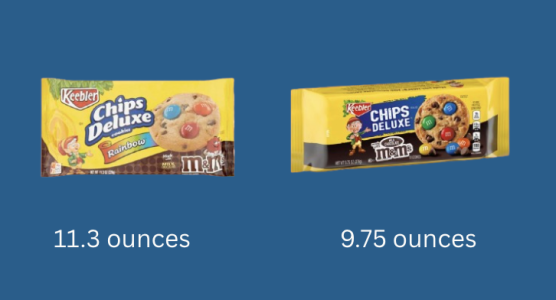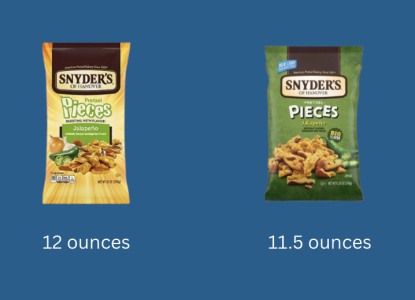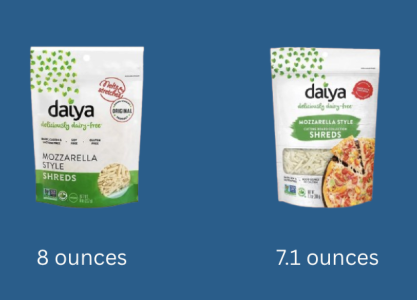Shrinkflation alert: 11 everyday products that are quietly getting smaller—but you’re still paying full price
By
Veronica E.
- Replies 0
Have your grocery bags felt lighter lately, even though your receipt total keeps climbing?
You're not alone—and you're not imagining it.
Many popular household items are shrinking in size while prices stay the same, or even increase.
This growing trend, called shrinkflation, lets brands cut costs without drawing attention.
And unless you're paying close attention to net weights and sheet counts, it's easy to miss until you're already running out.
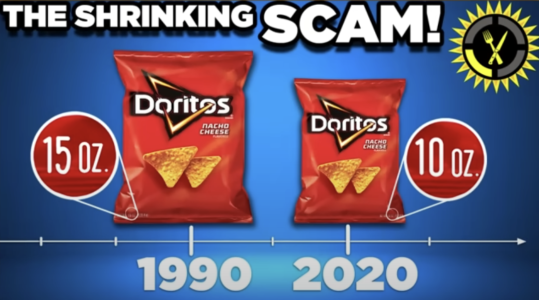
Shrinkflation is the sneaky tactic where companies reduce the size or quantity of a product without lowering the price.
It’s often marketed as a “new look” or “improved design,” but the math tells a different story.
As production and shipping costs rise, brands pass those increases on to consumers—without raising the price tag directly.
Instead, you just get less for your money.
Here are 11 popular items that have recently downsized.
A standard box of Kleenex used to include 65 tissues.
Now, you’ll only get 60. That’s five fewer tissues per box—and when cold and allergy season hits, you’ll feel the difference.
Chobani Flips went from 5.3 ounces to 4.5 ounces per container.
If yogurt is part of your daily routine, that small change adds up quickly over a week or two.
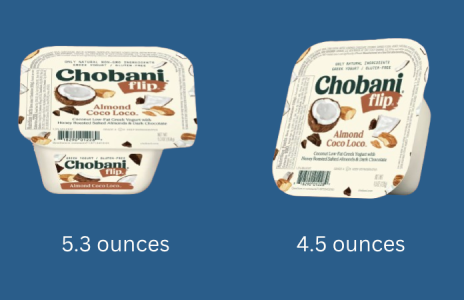
Toilet paper shrinkflation? Unfortunately, yes.
Cottonelle cut its roll size from 340 sheets to 312, meaning you’re getting fewer uses per roll—without any savings.
The classic red canister of Folgers has slimmed down from 51 ounces to 43.5 ounces.
The company says it still brews the same number of cups thanks to a new formula. Whether or not you agree probably depends on your morning routine.
Once sold in 32-ounce bottles, Gatorade now comes in 28-ounce versions—with no drop in price.
The brand says the new bottle is easier to hold, but many customers aren’t buying the excuse.
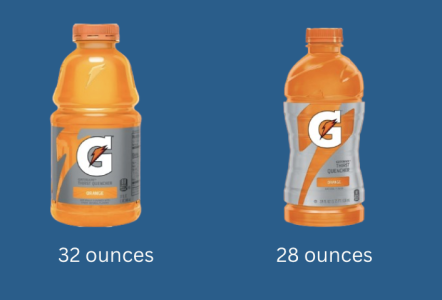
Hosting a game night or party? Take note: the “Party Size” Fritos Scoops bag used to weigh 18 ounces—it’s now down to 15.5 ounces.
That’s nearly 14% less, so plan accordingly.
Pantene quietly reduced the size of this bottle from 12 ounces to 10.4 ounces.
If you use it daily, you’ll need to restock more often just to maintain your regular hair care routine.
A box of these children’s snack bars once included eight bars.
Now, it’s just seven—without any price change.
If you're packing school lunches or snacks for grandkids, this change may sneak up on you.
Keebler’s cookie packages have shrunk from 11.3 ounces to 9.75 ounces.
Fewer cookies per pack means fewer moments to indulge—unless you buy more.
Dove’s body wash bottle used to hold 24 ounces. Today, it’s down to 22 ounces, a subtle change that adds up over time.
The bottle looks the same—but the value doesn't.
Snyder’s bags dropped from 12 ounces to 11.5 ounces, coinciding with a rebrand.
Same crunch, but less of it per bag.
Even dairy-free shoppers aren’t safe.
Daiya’s vegan cheese shreds shrank from 8 ounces to 7.1 ounces while being marketed as “new and improved.”
The only thing improved may be the margins.
It all comes down to cost.
With rising prices for ingredients, materials, and transportation, many companies choose to reduce product size rather than raise sticker prices outright. It’s less noticeable—and that’s the point.
But for shoppers, the long-term impact is real.
You’re spending more money to get the same results… or in many cases, less.
At The GrayVine, we believe in shopping smarter, not just harder. Here are a few tips to stay ahead:
Shrinkflation isn’t new—but it’s happening more often, and across more product categories.
From snacks to shampoo, cleaning supplies to coffee, many items are giving consumers less without lowering the price.
The good news? In some cases, consumer pushback works.
Brands like Tostitos and Ruffles have quietly reversed their shrinkflation moves after customers spoke out.
Read next:

Have you noticed one of your favorite products shrinking? Do you have any shopping tips for spotting better deals or avoiding shrinkflation altogether? We’d love to hear your stories and savvy tricks in the comments. At The GrayVine, community conversations help all of us stretch our dollars a little further—and keep brands accountable.
You're not alone—and you're not imagining it.
Many popular household items are shrinking in size while prices stay the same, or even increase.
This growing trend, called shrinkflation, lets brands cut costs without drawing attention.
And unless you're paying close attention to net weights and sheet counts, it's easy to miss until you're already running out.

Shrinkflation is hitting store shelves—many everyday products now offer less for the same price. Image Source: YouTube / The Food Theorists.
What is shrinkflation—and why should you care?
Shrinkflation is the sneaky tactic where companies reduce the size or quantity of a product without lowering the price.
It’s often marketed as a “new look” or “improved design,” but the math tells a different story.
As production and shipping costs rise, brands pass those increases on to consumers—without raising the price tag directly.
Instead, you just get less for your money.
Here are 11 popular items that have recently downsized.
1. Kleenex Tissues
A standard box of Kleenex used to include 65 tissues.
Now, you’ll only get 60. That’s five fewer tissues per box—and when cold and allergy season hits, you’ll feel the difference.
2. Chobani Flips Yogurt
Chobani Flips went from 5.3 ounces to 4.5 ounces per container.
If yogurt is part of your daily routine, that small change adds up quickly over a week or two.

Chobani Flips are now lighter by nearly an ounce—less crunch and cream in each bite. Image Source: Cheapism / The GrayVine.
Also read: Dollar General warns shoppers about rising prices—what’s behind the hikes
3. Cottonelle Ultra Clean Care Toilet Paper
Toilet paper shrinkflation? Unfortunately, yes.
Cottonelle cut its roll size from 340 sheets to 312, meaning you’re getting fewer uses per roll—without any savings.
4. Folgers Coffee
The classic red canister of Folgers has slimmed down from 51 ounces to 43.5 ounces.
The company says it still brews the same number of cups thanks to a new formula. Whether or not you agree probably depends on your morning routine.
5. Gatorade
Once sold in 32-ounce bottles, Gatorade now comes in 28-ounce versions—with no drop in price.
The brand says the new bottle is easier to hold, but many customers aren’t buying the excuse.

Gatorade’s bottle redesign holds less liquid—but the price hasn’t slimmed down. Image Source: Cheapism / The GrayVine.
Also read: Alert: How Frito-Lay and Kellogg’s are tricking you with "sneakflation"—spot the deception in their packaging!
6. Fritos Scoops "Party Size"
Hosting a game night or party? Take note: the “Party Size” Fritos Scoops bag used to weigh 18 ounces—it’s now down to 15.5 ounces.
That’s nearly 14% less, so plan accordingly.
7. Pantene Pro-V Curl Perfection Conditioner
Pantene quietly reduced the size of this bottle from 12 ounces to 10.4 ounces.
If you use it daily, you’ll need to restock more often just to maintain your regular hair care routine.
8. Earth’s Best Organic Sunny Day Snack Bars
A box of these children’s snack bars once included eight bars.
Now, it’s just seven—without any price change.
If you're packing school lunches or snacks for grandkids, this change may sneak up on you.
Also read: From “skibidi” to “tradwife”: The surprising words now in the dictionary
9. Keebler Chips Deluxe with M&Ms
Keebler’s cookie packages have shrunk from 11.3 ounces to 9.75 ounces.
Fewer cookies per pack means fewer moments to indulge—unless you buy more.
10. Dove Body Wash
Dove’s body wash bottle used to hold 24 ounces. Today, it’s down to 22 ounces, a subtle change that adds up over time.
The bottle looks the same—but the value doesn't.
11. Snyder’s Pretzels
Snyder’s bags dropped from 12 ounces to 11.5 ounces, coinciding with a rebrand.
Same crunch, but less of it per bag.
Bonus: Daiya Vegan Cheese Shreds
Even dairy-free shoppers aren’t safe.
Daiya’s vegan cheese shreds shrank from 8 ounces to 7.1 ounces while being marketed as “new and improved.”
The only thing improved may be the margins.
Also read: 7 restaurant chains still serving big portions at small prices
Why is shrinkflation happening?
It all comes down to cost.
With rising prices for ingredients, materials, and transportation, many companies choose to reduce product size rather than raise sticker prices outright. It’s less noticeable—and that’s the point.
But for shoppers, the long-term impact is real.
You’re spending more money to get the same results… or in many cases, less.
Also read: Will Trump’s tariffs make groceries more expensive? Here’s what some experts think
How to outsmart shrinkflation
At The GrayVine, we believe in shopping smarter, not just harder. Here are a few tips to stay ahead:
- Always check net weight or sheet count—especially if a product looks or feels different.
- Use unit pricing posted on store shelves (price per ounce, per 100 sheets, etc.) to compare brands.
- Buy in bulk if the math works in your favor—but double-check sizes, even on “family” or “value” packs.
- Try store brands, which are often slower to shrink or offer better value overall.
- Give feedback to companies when you notice shrinkflation. Your voice matters.
Also read: America’s oldest family grocery blends tradition with a charm that never fades
Is this the new normal?
Shrinkflation isn’t new—but it’s happening more often, and across more product categories.
From snacks to shampoo, cleaning supplies to coffee, many items are giving consumers less without lowering the price.
The good news? In some cases, consumer pushback works.
Brands like Tostitos and Ruffles have quietly reversed their shrinkflation moves after customers spoke out.
Read next:
Key Takeaways
- Many well-known brands have quietly reduced product sizes without lowering prices, in a growing trend known as shrinkflation.
- Affected items include Kleenex, Chobani, Cottonelle, Folgers, Gatorade, Fritos, Pantene, and others—across food, personal care, and household essentials.
- Shrinkflation is often disguised as packaging updates or “new designs,” making it harder for shoppers to notice.
- Smart shopping strategies—like checking unit pricing and giving feedback—can help consumers stay ahead and make their voices heard.
Have you noticed one of your favorite products shrinking? Do you have any shopping tips for spotting better deals or avoiding shrinkflation altogether? We’d love to hear your stories and savvy tricks in the comments. At The GrayVine, community conversations help all of us stretch our dollars a little further—and keep brands accountable.
Attachments
-
 Screenshot 2025-09-22 at 9.07.33 PM.png206.5 KB · Views: 0
Screenshot 2025-09-22 at 9.07.33 PM.png206.5 KB · Views: 0 -
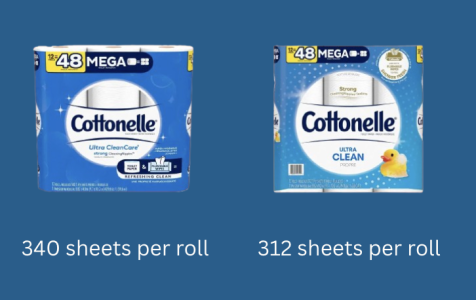 Screenshot 2025-09-22 at 9.08.01 PM.png260 KB · Views: 0
Screenshot 2025-09-22 at 9.08.01 PM.png260 KB · Views: 0 -
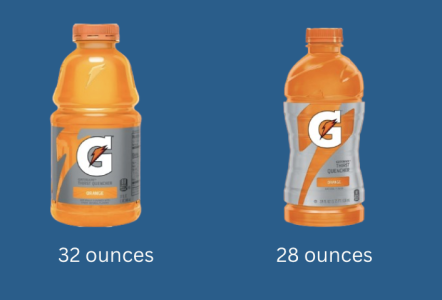 Screenshot 2025-09-22 at 9.08.35 PM.png190.2 KB · Views: 0
Screenshot 2025-09-22 at 9.08.35 PM.png190.2 KB · Views: 0 -
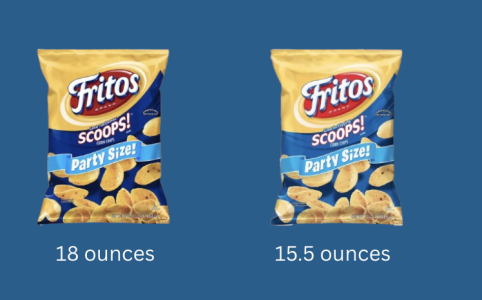 Screenshot 2025-09-22 at 9.09.00 PM.png279.3 KB · Views: 0
Screenshot 2025-09-22 at 9.09.00 PM.png279.3 KB · Views: 0 -
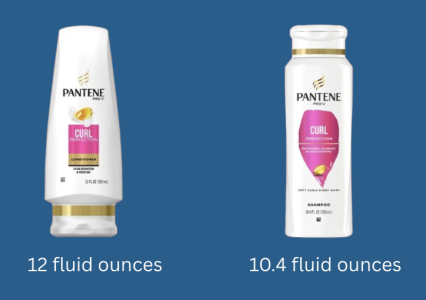 Screenshot 2025-09-22 at 9.09.59 PM.png162.5 KB · Views: 0
Screenshot 2025-09-22 at 9.09.59 PM.png162.5 KB · Views: 0 -
 Screenshot 2025-09-22 at 9.10.30 PM.png263.4 KB · Views: 0
Screenshot 2025-09-22 at 9.10.30 PM.png263.4 KB · Views: 0 -
 Screenshot 2025-09-22 at 9.11.05 PM.png182.8 KB · Views: 0
Screenshot 2025-09-22 at 9.11.05 PM.png182.8 KB · Views: 0

